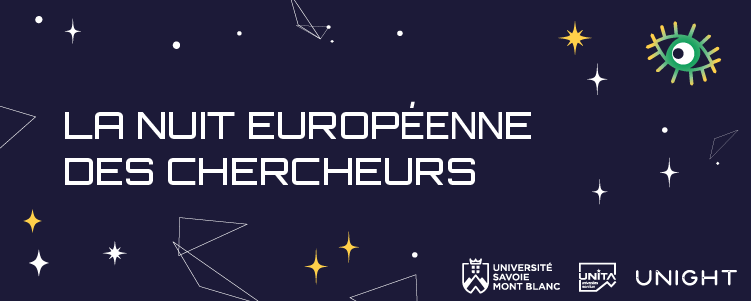On September 22 and 29, meet the researchers!
Away from the institutional framework of the university and its research laboratories, come and meet the researchers! It's the perfect opportunity to talk to scientists from all disciplines. Workshops, lectures, mini-conferences, exhibitions, walks: a full program awaits you on this occasion. This year,université Savoie Mont Blanc is taking over five venues for two evenings:
September 22, 2023
- Bourg Saint Maurice at the Friche Culturelle: "Deconstructing mountain myths".
See the program for the European Researchers' Night in Bourg Saint Maurice
September 29, 2023
- Annecy at Turbine sciences: "Space: a fabulous adventure?
See the program for European Researchers' Night in Annecy - Chambéry at Galerie Eurêka: "Explore the plant world!
See the program for European Researchers' Night in Chambéry - Évian-les-Bains at the Médiathèque & Palais Lumière: "Biodiversity of lakes and rivers".
Consult the program for the European Researchers' Night at Évian-Les-Bains - Faverges-Seythenex: "Evolution of the landscape
See the program for the European Researchers' Night in Faverges-Seythenex
The project is run byUniversité Savoie Mont Blanc with the support of the UNITA network.
Read more
- Event open to all, no registration required and free of charge
- Contacts : Pascale Balland and Lauranne Jacob, scientific and technical culture project manager and project officer at the French National Scientific and Technical Institute.université Savoie Mont Blanc
